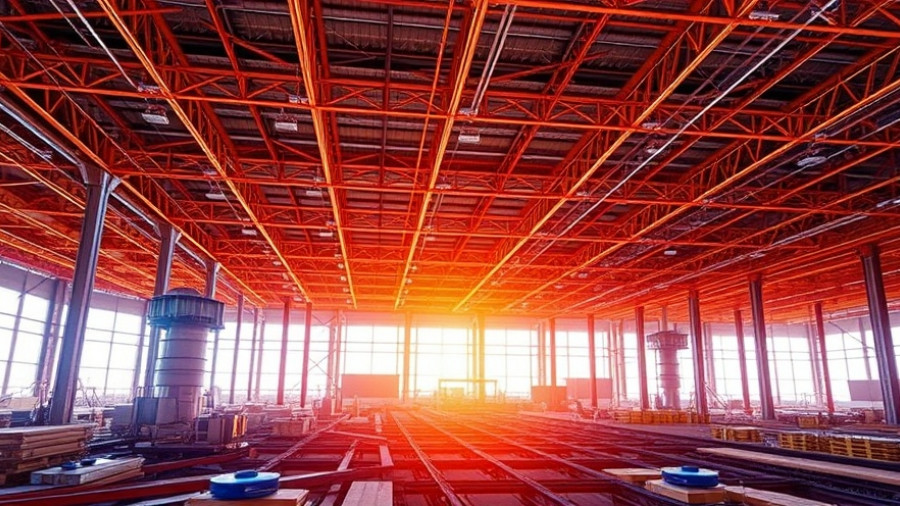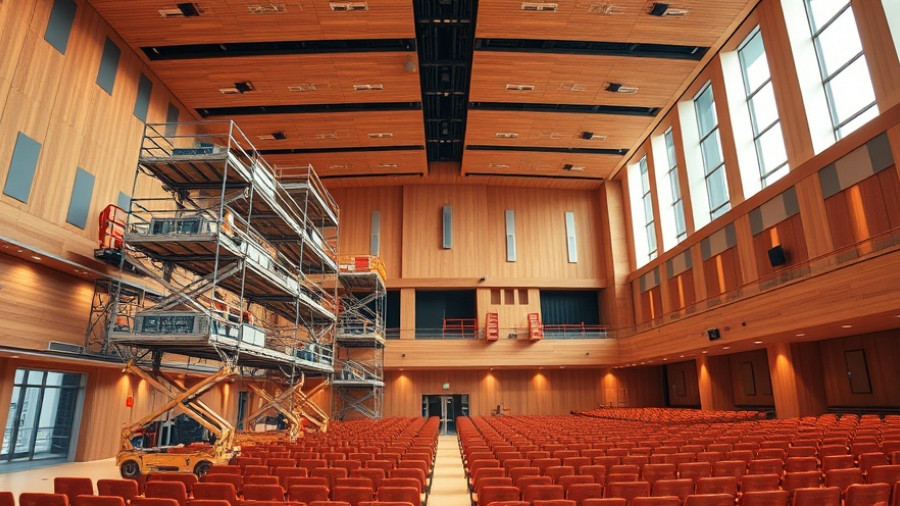
The Surge of AI in Construction: A Game-Changer for Homeowners and Contractors
The world of construction is undergoing a seismic shift, attributed to a staggering $3.96 billion influx in U.S. construction tech funding during the second quarter of 2025. Fueled predominantly by artificial intelligence (AI) and machine learning (ML), this investment marks an impressive 75.2% increase from the same period last year. For homeowners, new homeowners, and growing families, this trend indicates a ripe environment for innovation that could transform how homes are designed, built, and managed.
Understanding the AI Boom in Construction Tech
In 2025, startups integrating AI received approximately 68% of this capital, translating to about $2.71 billion. This influx isn't merely a trend; it's a signal that construction firms are no longer tiptoeing around technology. They're diving headfirst into embedding AI into their everyday operations, aimed at improving productivity, risk management, and planning.
What’s Driving the Shift to AI?
So, why the sudden enthusiasm for AI in construction? First, the complexities of modern construction projects necessitate advanced coordination that only AI can offer. From weather forecasting to supply chain logistics, AI tools analyze vast amounts of data to deliver insights that manual processes simply cannot. With the construction sector predicted to expand significantly, the integration of AI tools is not just beneficial but essential for maintaining competitive advantages.
Transformative Technologies Changing Home Construction
Technologies such as predictive analytics, digital twins, and robotics are being applied to age-old challenges in the construction industry. Startups are now developing innovative AI tools for estimating, scheduling, and managing labor resources. For instance, applications powered by AI can help determine the most effective way to complete tasks, optimizing labor costs and timelines while maintaining quality.
The Impact on Homeowners and Future Buyers
For homeowners and potential homebuyers, these advancements mean enhanced project transparency and efficiency. AI can streamline processes, potentially lowering costs associated with construction delays and misestimations. Furthermore, the surge in AI applications suggests that future homeowners can expect more personalized and responsive designs, as technologies allow for rapid adaptations to homeowner preferences.
Challenges to Overcome in Implementing AI
However, the path to AI integration isn't without its challenges. Many firms still rely on outdated systems, and fragmented data remains a significant issue that hampers the widespread application of AI tools. Moreover, there could be resistance to adopting new technologies from field crews due to anxiety over job security, which necessitates a focus on training and communication.
The Future is Bright: What Lies Ahead for AI in Construction
The connection between advanced technology and traditional construction practices may seem unlikely at first, but construction firms are beginning to realize that embracing high-tech solutions is not just beneficial but crucial for staying competitive. Experts predict that AI's share of the construction market could swells from $4.86 billion in 2025 to more than $22 billion by 2032. This growth will continue to shape how homeowners envision their living spaces.
Conclusion: The Call to Action for Homeowners and Investors
The message for construction firms and investors alike is crystal clear: the sector is rapidly evolving, and the competitive landscape is shifting towards technology-driven solutions. Homeowners should pay close attention to these advancements as they engage with contractors and builders; investing wisely in design and construction services that utilize AI could yield significant benefits. As the dust settles on this technological revolution, engaging with firms that are fully embracing these innovations will be key to realizing value in home construction and renovations.
 Add Row
Add Row  Add
Add 




Write A Comment